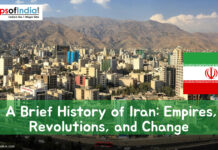The swadeshi movement is significant for many reasons. I won’t go into historical nitty-gritty here, but there is a consensus among scholars of history about its impact on the Indian national movement. While mostly associated today with Gandhism, mainly due to the charkha, the main forces behind this were Bal Gangadhar Tilak, Lala Lajpat Rai, Aurobindo Ghosh, Veer Saverkar, and Bipin Chandra Pal, among several others.
The movement was both popular and populist in its focus and aimed at deterring British rule through the use of strategies that were economic in its approach. The objective was to encourage self-employment as a national unit. This was done through a boycott of all British-manufactured products and a thrust towards domestically manufactured products. Multiple industries in various sectors cropped up during this period.
Popular sentiment was generated through ritualistic exercises like the burning of British cloth. Support was also harnessed through Hindu festivals like the Ganpati Jayanti – a move that drew criticism from various quarters for silencing Muslim sections of society. The charkha became a popular symbol and wearing khadi became a politically conscious act of exercising choice. Not only this, Indian labour was perhaps able to unionise for the first time because of this movement in staggering proportions.
If countries were said to have a life of their own, and many would not argue otherwise, then India as a unified force achieved a new milestone thanks to this movement. Historically speaking, the nation came to life during this period. India as a community had come into being through an act of collective imagination. This had the effect opposite to what was intended – instead of dampening the collective spirit which the (first) Partition of Bengal by the British had sought to achieve – the movement created a sort of euphoria and mass appeal. Thus the first swadeshi paradox. There are problems with that sort of unquestioned nationalism as well. But that seems to be the subject of an altogether different post.
So, what is the relevance of this piece of history for us today?
As we, as a country, make moves to welcome Foreign Direct Investment (FDI) in retail, nationalism and the meaning of swadeshi seems to change. There is a paradox involved. India, as a nation, seems ready to become a world leader – there is no better time to be an Indian than this, they say. Yet this unquestioned nationalism that seems to accompany it seems to be in the form of abandoning nationalism, in favour of a global identity. We seem to have become citizens of the world. Yet, what hides beneath is an American expansionist drive, a force that seems to go unquestioned. And lo and behold: the second swadeshi paradox.
So what’s the moral of this? Do we let FDI be trashed? Do we welcome it with open arms? Or, do we instead find a balance between not losing our voice as a country, not letting nationalism silently drown the voices of the oppressed and simultaneously emerge as a force to be reckoned with?
The latter, I should think. But to do that, we have a long way to go.



